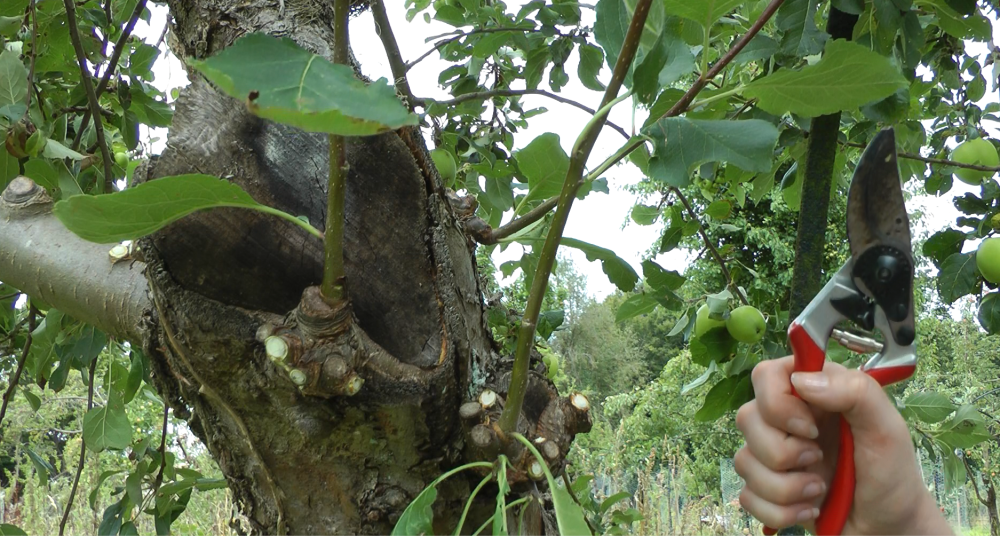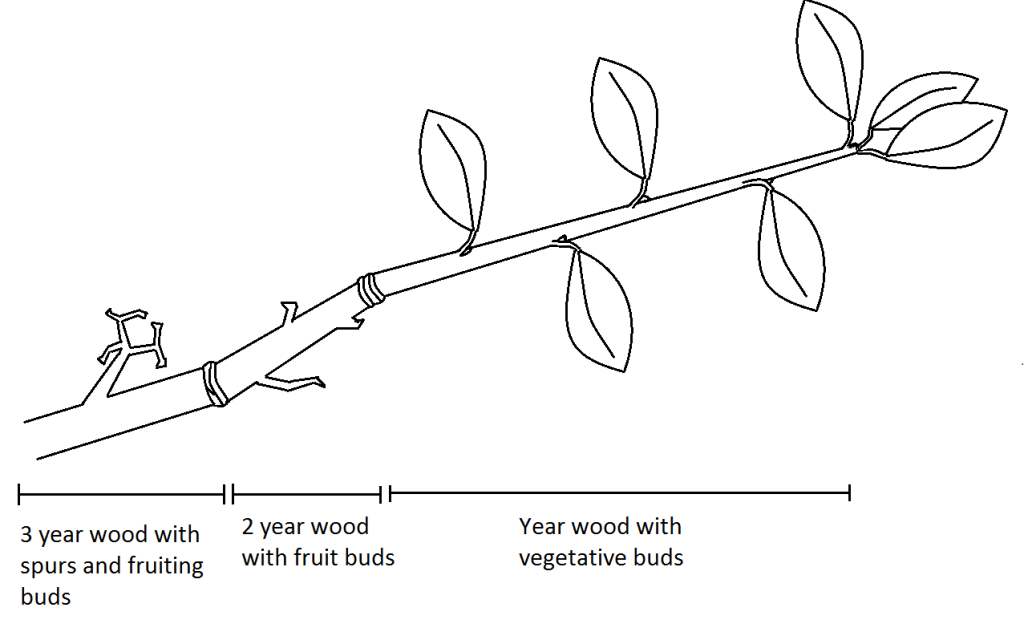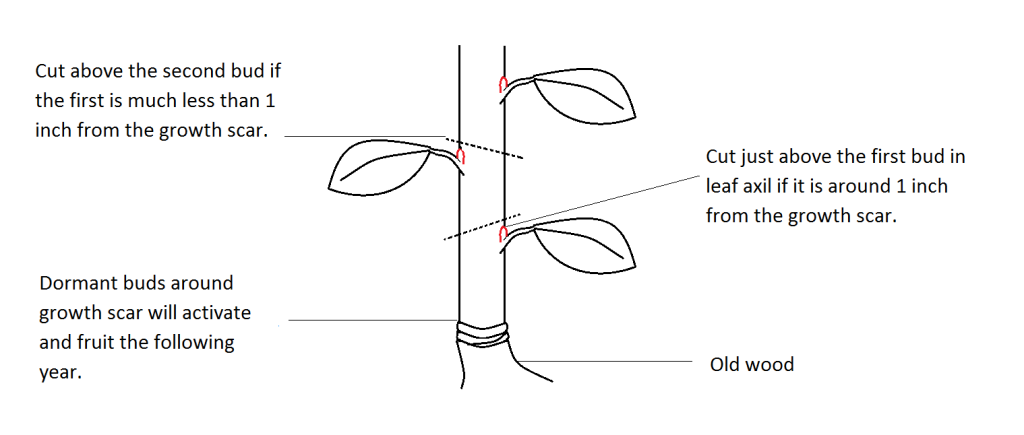Summer pruning

Summer fruit tree pruning contains the size of your tree to the form you have chosen. Unlike winter pruning, summer pruning has a fairly rigid set of principles to follow.
What is summer pruning?
Summer fruit tree pruning contains the size of your tree to the form you have chosen, in contrast to winter pruning that encourages additional growth for building framework and renewal branches. It is essential for trees trained to a restricted form, like pyramidal bush, espaliers or cordons, but can also keep standard trees from outgrowing their allocated space. In the summer after heavy winter pruning excess vigorous growth and water shoots can be removed leaving only a choice few.
Pruning out excess growth can thin out ‘crowded’ trees, allowing good air circulation and even light penetration, and focusses the tree’s energy to fruit production. An airy tree with fewer young shooting tips will be less prone to aphids, scab, mildew and other pests and diseases, which favour shady sheltered conditions.
Whilst fruit trees produce fruit buds and spurs naturally, summer pruning helps them to produce more, and in the places you want them. Bear in mind that the leaves manufacture the nutrients for fruit production. However, over-cropping will resulting in small fruit and a stressed tree.
Summer prune timing
Summer pruning has to be done within a specific time window, which is normally when about ¾ of the growing buds have ‘set’ for the season. The indication that this has happened is that the branch tips will hold mature leaves rather than small pale green leaves seen when growth is active. This is normally around the last week of July or early August. If done too early, the branches regrow leaving soft unripe wood that won’t survive too many frosts. If pruned too late, the pruning wound has less time to ‘heal’ again resulting in winter die-back.
How to summer prune apple and pear trees
Unlike winter pruning, where more choice and judgement are utilised, summer pruning has a fairly rigid set of principles to follow. In most scenarios you are pruning year old growth and either cutting it out entirely, using it to extend an existing fruit spur or create a new spur system. Older growth should generally be pruned as part of your winter pruning, which will encourage regrowth the following year.
First find your year-wood
Do this by following down a newly grown twig from the tip; the point at which the bark changes and there is a ridged banding in the bark is the point at which it started growing after the winter dormancy.
Cut out vigorous one year growth
Cut out vigorous one year growth unless it is suitable for extension or replacement (aka. renewal) framework branches. In open-centred trees particularly make sure to cut out any young growth from the centre of the tree. Always remember this old rule of thumb: you should be able to throw your hat through the middle of the tree! (Alternatively, the American version of this phrase involves the throwing of a cat). A water shoot is an overly vigorous branch, normally growing straight up, and will draw the lion’s share of the tree’s energy. These should be cut out nearly flush with the parent branch (without damaging the ‘collar’ – see below), the only exception being any particularly well placed shoots that you would like to convert into permanent branches. Although these may be growing vertically, they will drop naturally with the weight of a crop, or can be pegged, tied or weighed down artificially.
Pruning growth from a fruit spur
For any material originating from a fruit spur, cut the new growth back to one clear leaf axil bud from the base of this year’s wood. This should convert this leaf bud into fruit bud which will flower and fruit the next year. Ideally this would be about 1 inch from the growth scar, however this often varies so if this bud is closer to the rings than this, cut just above the second instead.
Creating new fruit spurs
If you have new growth from the trunk or any framework branches that you want to turn into a new fruiting spur, cut this growth back to three clear buds instead of one. This will encourage some buds to convert to fruiting buds, but allows others to put on vegetative growth next year, which can be pruned again to develop the spur system further.
For tip-bearing varieties
Some apple varieties flower and fruit partially (or rarely predominantly) at the end of the last year’s growth rather than just on fruit spurs on two year wood. Most stone fruits only flower on last year’s growth. Prune out the vigorous one year growth, but leave the shorter growth. If you prune out all year growth you will have a reduced or no crop.
Summer pruning stone fruit trees
Pruning plum or cherry trees in winter increases the chance of infection by silver leaf. For this reason mature stone fruit trees should be pruned in mid-summer. Summer pruning does reduce the yield slightly, but also results in bigger individual fruits.
Plum trees can often be heavy cropping which can occasionally causes branches to break under the weight. Prune back any broken branches to undamaged wood, and consider thinning the fruit in years where it looks like you will have a very heavy crop.


